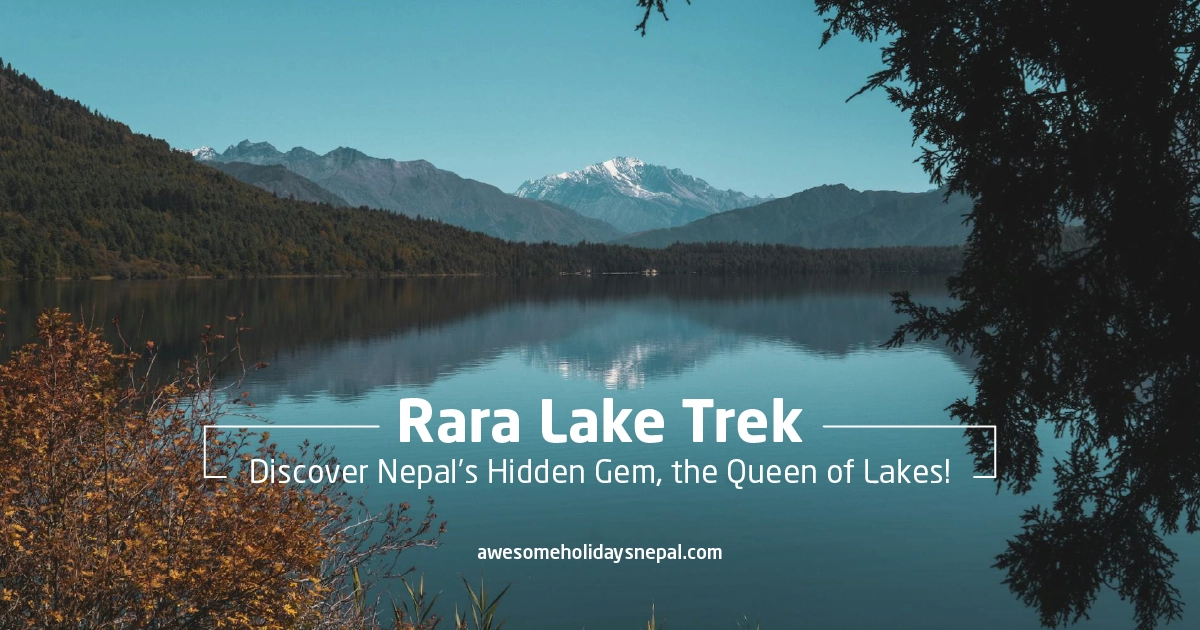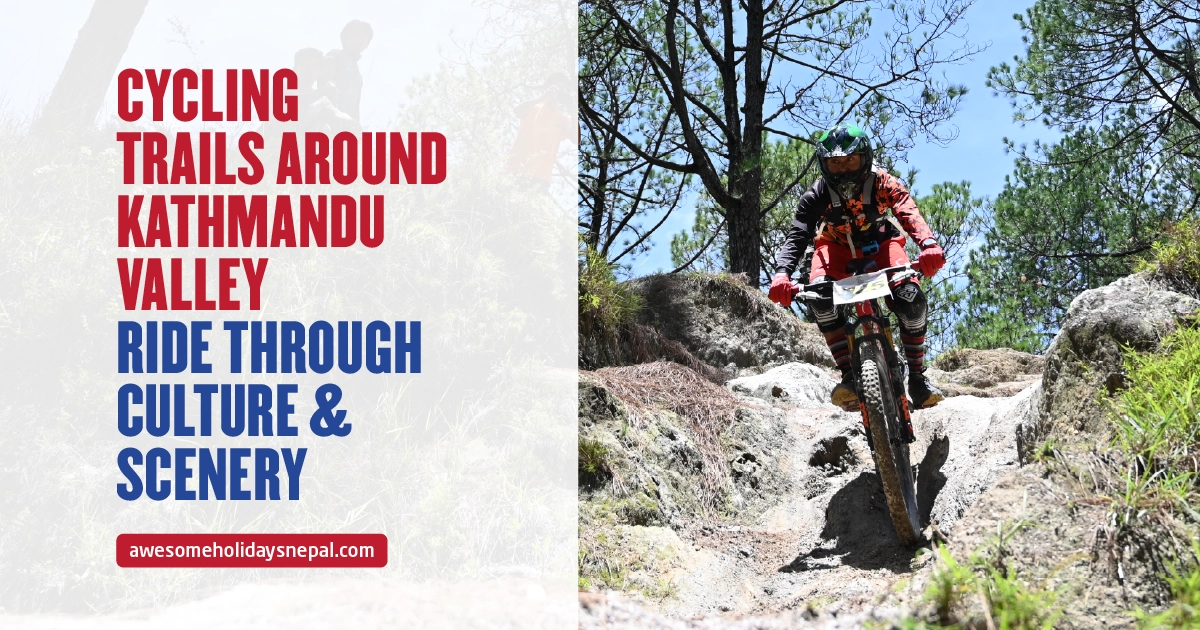Best Viewpoints in Everest Region: A Journey to the Top of the World
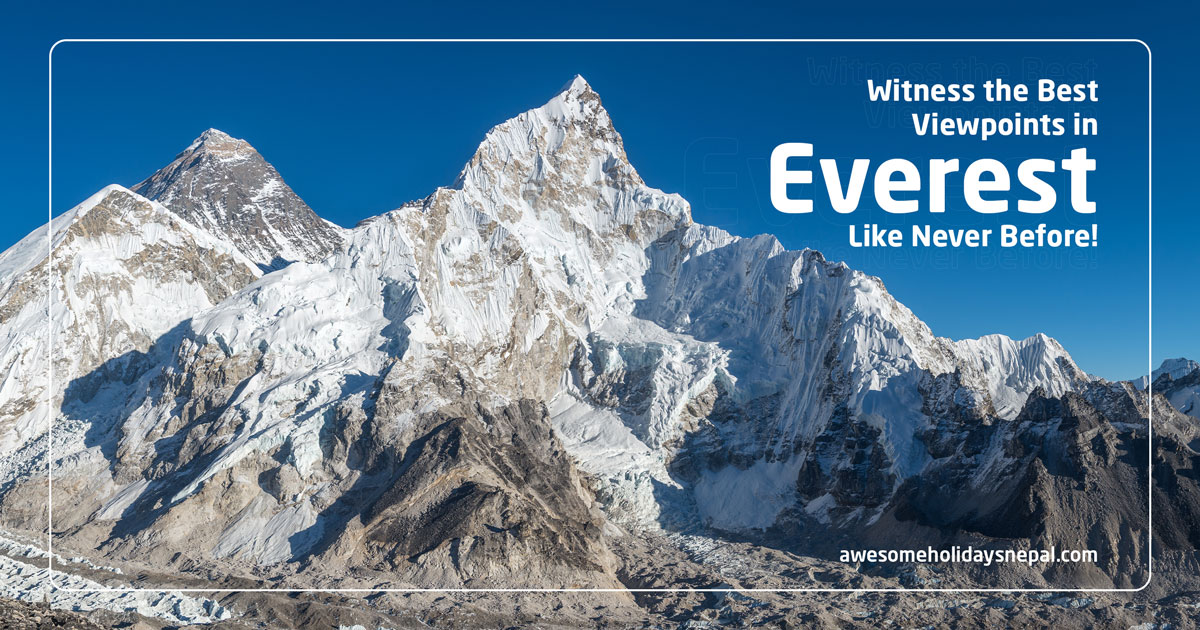
The Everest Region, also known as the Khumbu Valley, is home to towering peaks, ancient cultures, and breathtaking landscapes. It is a place where the sky meets the earth, and the air is filled with the whispers of mountaineering legends.
For trekkers, adventurers, and nature lovers, the Everest Region offers some of the most spectacular viewpoints in the world. These viewpoints in Everest points not only provide unparalleled views of the Himalayas but also immerse visitors in the rich culture, history, and spirituality of the Sherpa people.
In this blog, we explore the 10 best viewpoints in the Everest Region that every traveler must experience.
Kala Patthar (5,545 m / 18,192 ft)
Kala Patthar is one of the most famous viewpoints on Everest, offering breathtaking panoramic views of Mount Everest, Nuptse, and Pumori. Kala Patthar, which means black rock, is the most iconic viewpoint, renowned for offering the closest and most dramatic view of Mount Everest.
Located near the Gorak Shep, this small hill offers a jaw-dropping panoramic view of Mount Everest, Nuptse, Lhotse, and the Khumbu Glacier. The Everest peak is not visible from the Everest Base Camp, which is visible from the Kalapatthar.

The golden hues of the sunrise falling onto Everest create an unforgettable sight from Kala Patthar is legendary. Kala Patthar is not just a visual treat but also a symbol of human endurance. It is a challenging climb, but the reward is worth every step.
Gokyo Ri (5,357 m / 17,575 ft)
Arguably Gokyo Ri is one of the highest viewpoints in Everest, stands at 5,357m, and offers a spectacular sight of the Everest range, including Cho Oyu and Makalu. Gokyo Ri is a hidden gem in the Everest Region, offering a quieter but more mesmerizing sunset and sunset view. This can be a spectacular alternative to Kala Patthar.
Perched above the serene Gokyo Lakes, this viewpoint provides a 360-degree panorama of four 8,000-meter peaks: Mount Everest, Mount Lhotse, Mount Makalu, and Mount Cho Oyu.
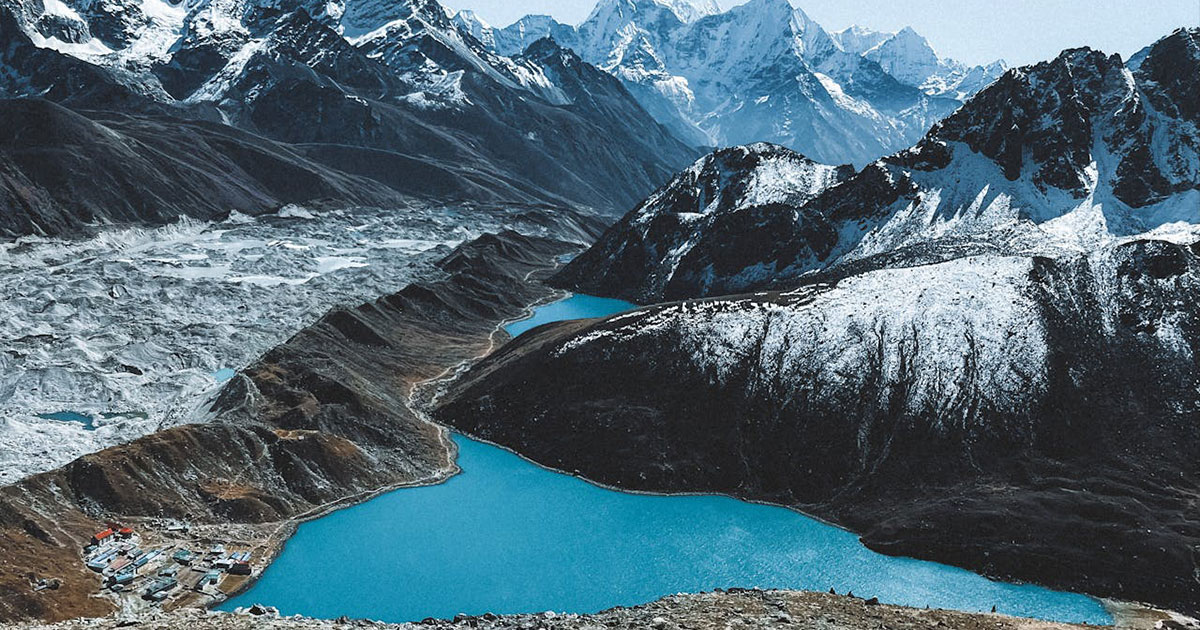
The Gokyo Lakes are considered sacred by both Buddhists and Hindus. The turquoise Gokyo lakes below and the Ngozumpa Glacier add an ethereal touch to the surreal beauty of the scene. The gigantic mountain range dominates the skyline, making this a photographer’s paradise. The surrounding of the Gokyo Ri is dotted with Chortens, prayer flags, and mani-walls, and is steeped in spiritual significance.
Chhukung Ri (5,550 m / 18,208 ft)
Chhukung Ri is a lesser-known but equally rewarding viewpoint near the village of Chhukung. The climb is steep but offers breathtaking views of Island Peak, Lhotse, Makalu, and Amphu Labtsa pass. The rugged terrain and glacial valleys create a dramatic backdrop for photography enthusiasts.
Chhukung Ri is also a popular acclimatization spot for climbers preparing to summit Island Peak. The sense of isolation and the raw beauty of the landscape make it a must-visit for adventurous souls.
Renjo La Pass (5,360 m / 17,585 ft)
Renjo La Pass is one of the three high passes in the Everest Region and a favorite among seasoned trekkers. The pass connects the Gokyo Valley with the Thame Valley and offers a mesmerizing view of Everest, Nuptse, Lhotse, and the Gokyo Lakes.
The journey to Renjo La Pass is as rewarding as the destination itself. Trekkers pass through remote Sherpa villages, ancient monasteries, and pristine landscapes. The trail to Renjo La is challenging but offers serenity away from the crowded trekking routes. The pass is also a gateway to the cultural heart of the Khumbu Valley, where traditions have remained unchanged for centuries.
Hotel Everest View (3,962 m/ 13,000 ft.)
Built in 1971, the Hotel Everest View was designed to cater to high-altitude tourists without requiring strenuous trekking in the Syangboche region. Hotel Everest View holds the title of the world’s highest hotel and is one of the most accessible viewpoints in Everest, perfect for those who want to witness the grandeur of Everest without a strenuous trek.
This luxurious viewpoint offers a relaxed way to admire Everest while enjoying a warm cup of tea. It is a must-visit for those who prefer comfort alongside adventure.
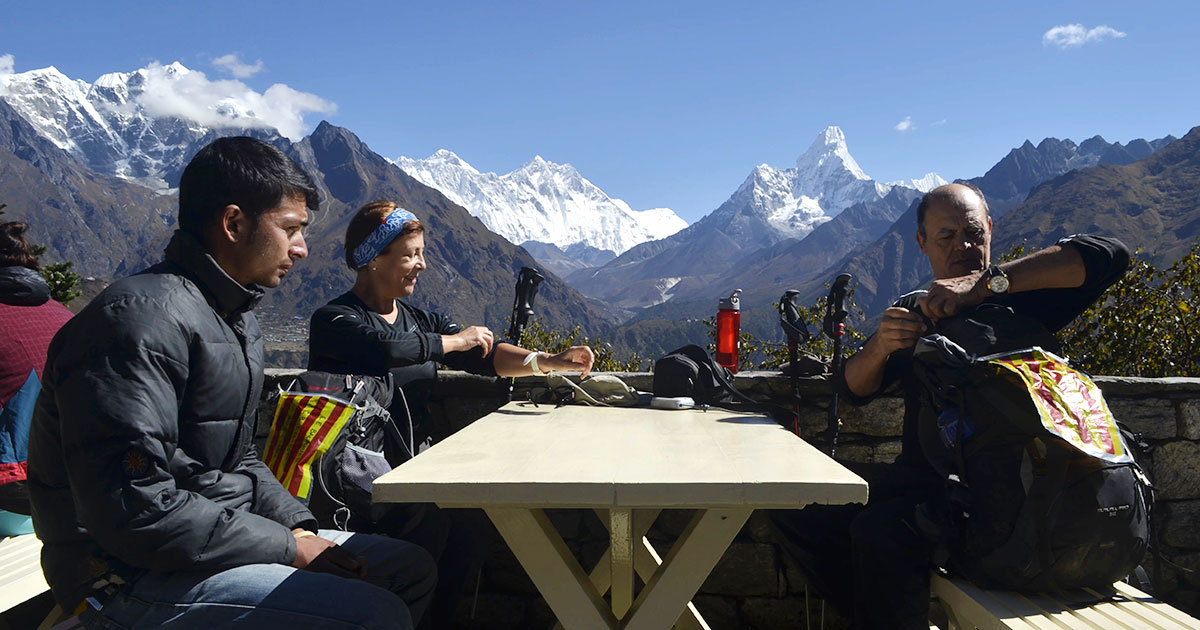
Travelers can enjoy a stunning view of Everest, Ama Dablam, and Lhotse while sipping on a warm cup of tea from the terrace of the Hotel Everest View. For those seeking a luxurious vantage point, the Hotel Everest view offers a panoramic 360-degree view of the awe-inspiring peaks. The surrounding rhododendron forests and the Sherpa culture add to the charm of this unique location.
Tengboche Village (3,867 m / 12,687 ft)
Tengboche is home to the largest Tengboche Monastery in the Khumbu Region. Tengboche Village is not just a viewpoint but a spiritual hub of the Everest Region. Home to the famous Tengboche Monastery, Tengboche village offers a stunning backdrop of Everest, Ama Dablam, and Thamserku. The monastery plays an essential role in the spiritual life of the Sherpa community.
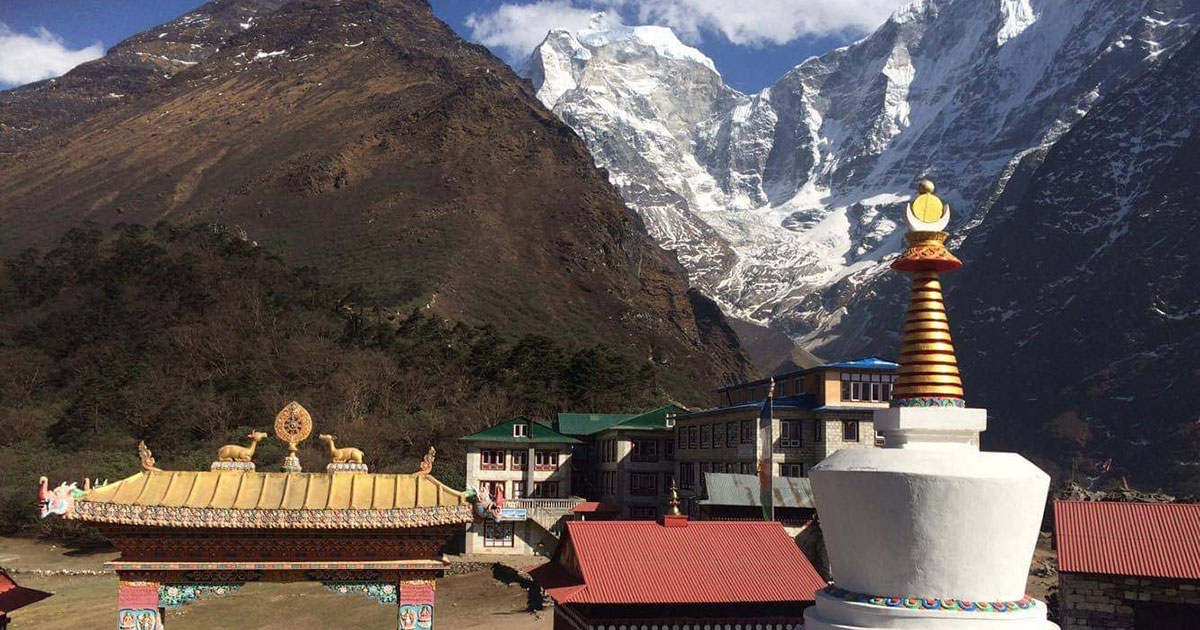
The annual Mani Rimdu festival, held at Tengboche Monastery, is a vibrant celebration of Buddhist culture. The combination of spiritual energy and natural beauty makes Tengboche a must-visit destination. The morning prayers at the monastery, coupled with the golden light illuminating the peaks, create a magical atmosphere.
Namche Bazaar (3,440 m / 11,286 ft)
Namche Bazaar is the gateway to the Everest Region and a cultural hub of the Khumbu Region. This bustling Sherpa town is surrounded by snow-capped peaks and offers stunning views of Kongde Ri and Thamserku. The 18th-century trading hub still organizes the weekly market that provides a glimpse into the local way of life.
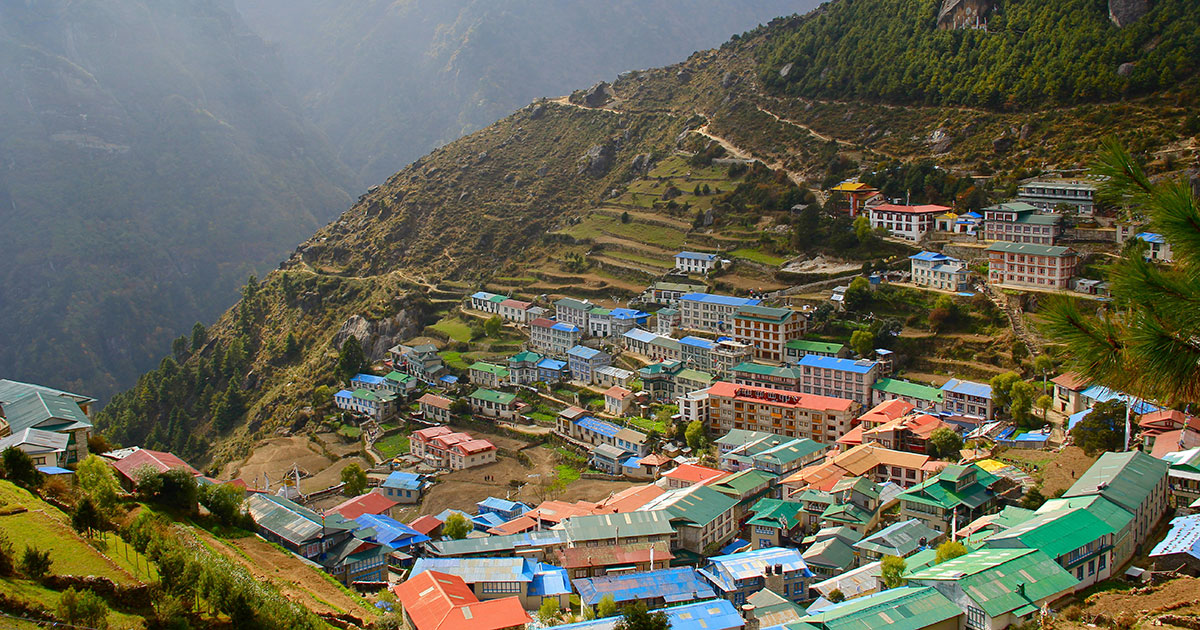
Namche is also an important acclimatization stop for trekkers. Before ascending to Everest Base Camp, trekkers often spend an extra day in Namche Bazaar to acclimatize. The short hike to the Everest View Hotel, the next day is a popular activity, offering panoramic views of the Himalayas such as Everest, Lhotse, and Ama Dablam. The town’s vibrant atmosphere and stunning scenery make it a favorite among visitors. The vibrant culture and warm hospitality of the Sherpas make Namche a delightful stop on any trek.
Farak Ri, Kongde (4,680 m / 15,354 ft)
Farak Ri, located above Kongde, is one of the most underrated viewpoints in the Everest Region. The ridge offers a unique perspective of Everest, Lhotse, and Ama Dablam, with the entire Khumbu Valley spread out below. The trek to Farak Ri is challenging but rewarding.
The trail passes through dense forests, alpine meadows, and remote Sherpa settlements. The sense of isolation and the panoramic views make Farak Ri a hidden gem for adventurous trekkers.
Nangkartshang Peak (5,070 m / 16,568 ft)
Nangkartshang Peak, near Dingboche, is a popular acclimatization hike with stunning views of Ama Dablam, Lhotse, and Makalu. The climb is steep but offers a sense of accomplishment and unparalleled views of the surrounding peaks.
The trail to Nangkartshang Peak is sprinkled with prayer flags and Chhortens, reflecting the deep spiritual connection of the Sherpa people with the mountains. The viewpoint is a perfect spot for meditation and reflection.
Why You Must Visit Viewpoints in Everest Region?
The Everest Region is more than just a trekking destination; it is a journey into the heart of the Himalayas. The region’s natural beauty, rich culture, and warm hospitality make it a must-visit for every traveler. Whether you are an avid trekker, a culture enthusiast, or a nature lover, the Everest Region has something for everyone.
Experience These Views with Awesome Holidays Nepal
Exploring the viewpoints in Everest with Awesome Holidays Nepal ensures an unforgettable adventure, combining breathtaking scenery with expert guidance and top-notch services.
From the panoramic sunrise over Everest at Kala Patthar to the stunning reflections of the Himalayas in Gokyo Ri’s glacial lakes, we take you to the most spectacular vantage points. Our experienced guides, well-planned itineraries, and commitment to safety ensure that you enjoy these mesmerizing landscapes without worry.
Whether you seek a challenging trek or a peaceful moment above the clouds, our tailored packages provide the perfect way to experience the best viewpoints in Everest with comfort and reliability.
Enjoy the Best Views of Everest
The Everest Region is a dream destination for adventurers, photographers, and nature lovers alike. These ten viewpoints of Everest offer some of the most spectacular landscapes on Earth, each with its unique charm and story. While trekking through the Khumbu region, don’t miss out on the stunning viewpoints in Everest, which offer some of the most awe-inspiring landscapes in the world.
If you love photography, the viewpoints in Everest will leave you mesmerized, as every frame captures the raw beauty of the Himalayas. Whether standing atop Kala Patthar to witness Everest’s majesty or gazing at the turquoise lakes from Gokyo Ri, every moment spent in this sacred land is unforgettable. The best viewpoints in Everest provide a surreal experience, with towering peaks, vast glaciers, and the deep valleys of the Khumbu region.
For those looking to embark on this incredible journey, Awesome Holidays Nepal is your perfect partner, ensuring an experience that blends adventure, culture, and comfort. Book your trip today and witness the wonders of the Everest Region like never before!
FAQs
Expand AllDoes Mount Everest always have snow?
Yes, Mount Everest is permanently covered in snow and ice due to its extreme altitude. The temperatures are always below freezing at the summit, preventing snow from melting.
Where is Mount Everest located on a map?
Mount Everest is located on the border between Nepal and Tibet (China). Its coordinates are approximately 27.9881° N latitude and 86.9250° E longitude.
Why do climbers summit Everest at night?
Climbers begin their final ascent at night to reach the summit at dawn when the winds are usually calmer. This also allows them enough daylight to descend safely before the afternoon weather becomes unpredictable.
What is the weather like in the Everest region?
The Everest region experiences extreme cold, high winds, and sudden weather changes. Winter temperatures can drop below -60°C (-76°F), and hurricane-force winds are common.
How extreme are Mount Everest’s weather condtions?
Everest has some of the harshest weather on Earth. The summit can experience wind speeds over 200 km/h (125 mph), and the oxygen level is about one-third of the sea level, making survival without supplemental oxygen extremely difficult.
What is the weather forecast for the Everest region?
The weather in the Everest region changes frequently. Mountaineers rely on real-time weather forecasts from meteorologists to plan their summit attempts. Services like Everest Weather Reports, mountain-forecast.com, and Windy.com provide updated forecasts.
How high is the Everest Death Zone?
The Death Zone extends from 8,000 meters to the Everest summit at 8,848.86 meters.
What kind of accommodation is available on the Everest trek?
Teahouses and lodges with basic facilities. Some stops like Lukla, Namche, and Dingboche offer luxury lodges.
Do I need a visa for Nepal?
Yes, most travelers get a Tourist Visa on arrival at Tribhuvan International Airport (TIA) in Kathmandu.
What currency should I carry for the trek?
Carry Nepalese Rupees (NPR) for expenses along the trek. ATMs are available in Lukla and Namche Bazaar but do not rely on them. Carry enough cash with you from Kathmandu.
Related blog posts
Discover a choice of tourist destinations loved by most of our visitors. Whether you're on a jungle safari to spot rare animals or walking through a world heritage site, these well-planned itineraries cover the major highlights of Nepal.


